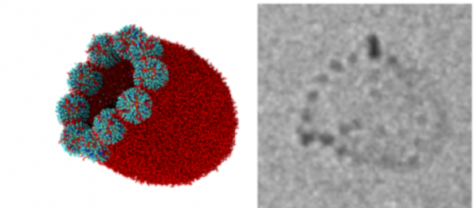INTERACTIONS BETWEEN SYNTHETIC NANOPARTICLES AND MODEL BIOLOGICAL MEMBRANES

Ciclo di incontri – Tavolo di discussione
INTERACTIONS BETWEEN SYNTHETIC NANOPARTICLES AND MODEL BIOLOGICAL
MEMBRANES
Giulia Rossi
Department of Physics, University of Genova, Italy
Synthetic nanoparticles (NP) play important roles in pharmaceutical and medical technology as
diagnostic or therapeutic devices. Metal NPs, in particular, can nowadays be engineered in a
multitude of shapes, sizes, compositions, and surface functionalizations. Despite such
technological advances, there is still a poor understanding of the molecular processes that drive
the interactions of metal NPs with cells. Cell membranes are the first barrier encountered by NPs
entering living organisms. The comprehension and control of the interaction of nanoparticles
with biological membranes are therefore of paramount importance to understanding the
molecular basis of the NP biological effects.
In this talk, I will focus on Au nanoparticles functionalized by a shell of amphiphilic ligands [1].
These nanoparticles have a stable interaction with lipid bilayers: they affect membrane
curvature [2], cause liposome-liposome aggregation, alter the membrane lateral phase
separation [3], and spontaneously form large, ordered NP assemblies [4]. We show that the
unexpected aggregation of same-charge NPs is both ion-mediated and membrane-mediated. The
understanding of NP self-assembly in the membrane environment is especially relevant, as the
aggregation of cell membrane inclusions drives fundamental cell functions, such as signaling and
transport. In this perspective, it is interesting to wonder if NPs can be considered as protein toy
models, and what we can learn by comparing their self-assembly behavior in the membrane
environment.
Lunedì 6 Dicembre, alle 11:45
Aula Didattica Palazzina E
Dipartimento di Ingegneria Meccanica e Aerospaziale - Via Eudossiana 18, Roma

